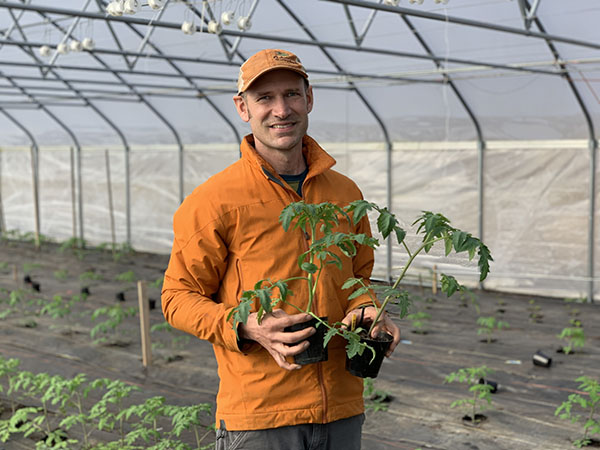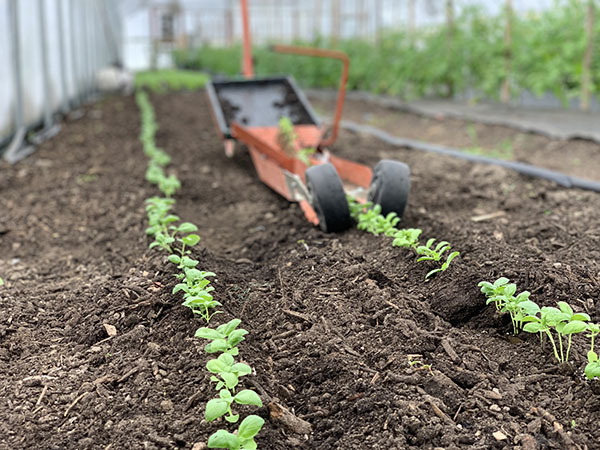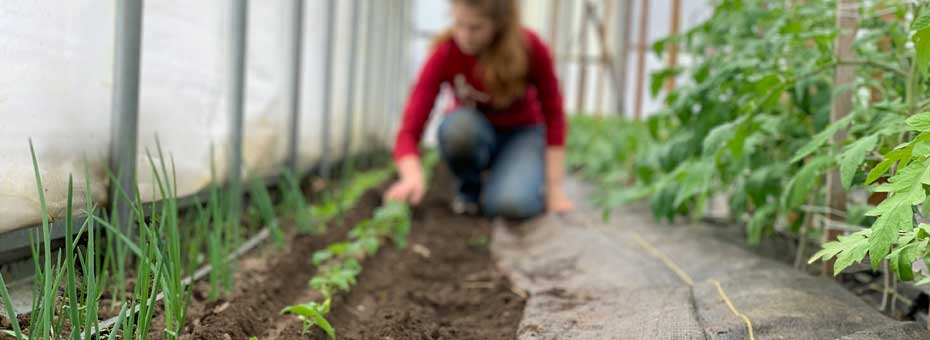In March, Ben Hartman, known as the Lean Farmer, changed over his entire business – in one week. Clay Bottom Farm’s restaurant customers had been forced to close because of Covid-19. Eighty percent of the farm’s revenue was disappearing.

Ben Hartman, the Lean Farmer
Ben is a lean thinking contrarian. He and his wife, Rachel Hershberger, run a highly diversified farm on less than an acre of land in Goshen, Indiana, where they’re surrounded by sprawling single-crop commercial farms. While news reports show farmers plowing under unsold crops, Ben declares, “These are wonderful times to be in agriculture! I’ve never seen more opportunity.”
Stop! And Learn What Your Customers Want…Now That Everything’s Different
After hearing the news of restaurant closures, Rachel ran from the farmhouse to the greenhouse where Ben was working. It was a short sprint. She found Ben transplanting some uncommon and expensive tomatoes ($1.50 per seed!) for six restaurant chefs who cooked up signature meals with fresh ingredients within 1½ miles of the farm. She stopped Ben in his tracks.
After checking in with their six chefs to confirm they were closing, they called potential new customers and asked three simple questions:
- What do you want?
- When do you want it?
- And how much?
“We learned from Jim Womack that with lean you start with the customer and work backwards from there,” he says. “Everything else is particular to your business. It’s not complicated but it does require discipline.”
Fast-forward to today – almost all of their customers will be new this season. Ben and Rachel learned what local home cooks want and started selling CSA (Community Supported Agriculture) memberships with free no-contact delivery. “We sold out of our current capacity in 1½ days,” he reports, “and I suspect we’re not coming close to meeting the demand.”
Is Your Soil Prepared?
Lean thinking has helped Clay Bottom Farm be extremely agile for changing circumstances, even pandemics. Farmers, of course, must be resilient to survive floods, droughts, and other blight. Lean is additive. Generously, Ben shares about this in his ground-breaking books, The Lean Farm and its successor, The Lean Farm Guide to Growing Vegetables.

Planting basil
Mindful of today’s challenges, here’s a summary of “lean farming”:
- Every seed planted has already been sold – Ben and Rachel develop relationships with their customers based on the three simple questions above, so they can plant with known quantities for when the food is needed. The answers are important. So, too, is the process of answering them together, cooperating as customer and supplier.
- Every square foot NEEDED yields its maximum possible output – First, they consider what their customers want and decide what they will grow (Note: they will not grow everything – other suppliers are acceptable for some items). Then, Rachel and Ben carefully plot out the field and the schedule. Unusually, they plant and harvest multiple times per season using known cycle times that were learned experimentally.
- Every motion is purposeful, i.e., value-add, and every linear foot of conveyance is necessary – Ben has observed, analyzed, and designed all of the main jobs on the farm. Workstations and tools are laid out so as to minimize walking. Moreover, weeding is done only to the level needed. Upon harvest, he and Rachel deliver the freshest possible produce direct to their customers – from the field straight to the kitchen. Their harvest-to-kitchen lead time is about four hours.
- Every moment is value-added, including the time spent on improvement and innovation – Rachel and Ben proudly tell people about their 35-hour workweek. Spending more time with their young children was an original reason to apply lean thinking. Later, it allowed Ben to share his learning by writing books. And now, that “free time” is being used to reinvent their business!
Now is a Time for Systemic Change
Ben shared what’s happening at Clay Bottom Farm on a recent Zoom call. LEI’s Team Leader Karen Gaudet had brought together a group of leaders from across the food industry. They believe the time is now to root out what has long plagued our food system: Forty percent of what’s grown is wasted. The work of farming, distributing, cooking, and serving is hard. Billions of people are malnourished. So much of what we eat is unhealthy. Businesses barely get by.
Considering what Ben and Rachel are doing, plus what I’m hearing about from other food business leaders, addressing these problems is possible with lean thinking and practice. Of course, transforming an individual and their work, a process, a value stream, a company, is one thing. Transforming an entire industry is quite another. But if ever there was a time for that, it’s now. Thankfully, Rachel, Ben, and others are experimenting already.
I will share more from these industry leaders in the coming weeks. Stay tuned. Also, click here to join the #LeanCommunity on Slack, where hundreds of lean practitioners are gathering for collaborative problem-solving and storytelling for today’s real challenges. Now, more than ever, in a time of global changeover, we need lean thinking. Anyone else up for the SWEB challenge?






